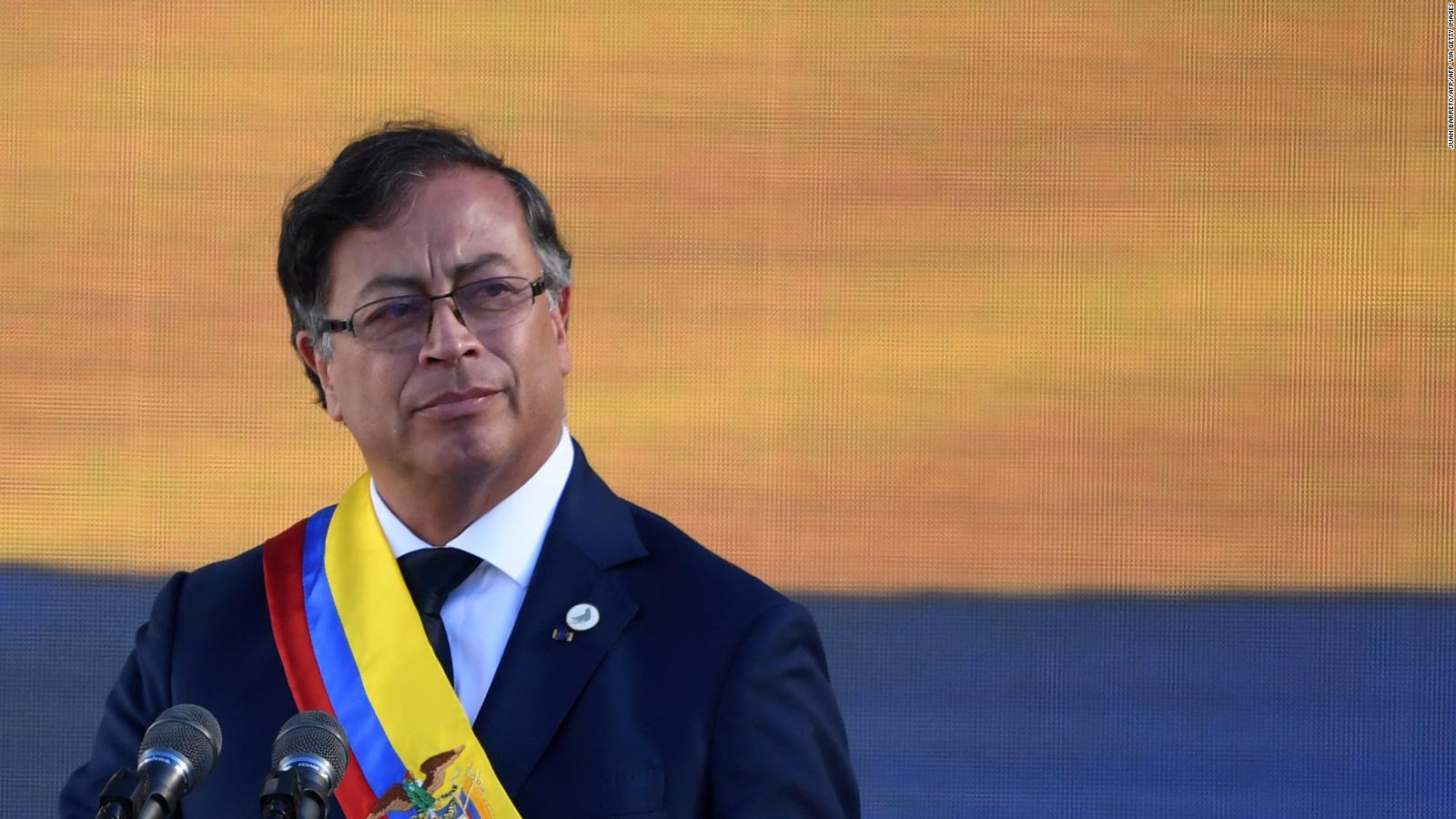"I want her to never be held again": Gustavo Petro orders to bring Bolívar's sword 1:11
(
CNN Spanish) --
Take the sword of Simón Bolívar from the Casa de Nariño, take it to the Plaza de Bolívar and present it to the more than 100,000 people who were there for his inauguration: this was the first order of Gustavo Petro, Colombia's first leftist president, after he was sworn into office.
But why?
The answer lies in the story —of a movie— of this national symbol.
"This sword represents too much for us, for us, and I want it to never be buried again, I want it to never be held again, that it only be sheathed — as its owner, the liberator, said — when there is justice in this country. Let it belong to the people : it is the sword of the people and that is why we wanted it here at this time and in this place".
This was part of Petro's message after Bolívar's mythical sword arrived, inside a heavily guarded glass case, on the stage of the square named after the liberator last Sunday.
(Credit: Guillermo Legaria/Getty Images)
Petro had requested that Bolívar's sword be present at the ceremony, but had faced the refusal of the government of now former President Iván Duque, who did not authorize its transfer to public space.
His argument, according to the local media report Semana, was security difficulties.
"Bolívar is not dead": the day the M-19 guerrilla stole Bolívar's sword
This is just the most recent chapter in the long history of the liberator's sword, a piece inventoried in 1924 that bears a relief shield of Gran Colombia and the three stars of General Bolívar, according to the Presidency review.
The most spectacular episode in its recent history is linked to the M-19, the socialist-style urban guerrilla group in which Petro militated during his youth.
advertising
On January 17, 1974, according to Miguel Ángel Gutiérrez of the Universidad del Valle, a group of five men commanded by Álvaro Fayad, one of the guerrilla leaders, entered the Quinta de Bolívar, the museum in downtown Bogotá where they found the sword, and stole it.
In its place he left a black mark and a note: "Bolívar has not died. His sword breaks the cobwebs of the museum and he launches himself into the combats of the present. It passes into our hands and now points against the exploiters of the people."
The impact of the robbery was greater than many could have imagined: for the following year the number of militants of the M-19 - of the so-called second wave of guerrilla movements in the country that grew throughout the region in the decade of 1970, influenced by the Cuban Revolution—had grown from 30 to 200, according to the review.
And it was not an exception for the movement, which in fact was characterized by "events of symbolic impact", according to the National Center for Historical Memory (CNMH), which also included the seizure of the embassy of the Dominican Republic in 1980 and the theft of weapons from the North Canton, a military fortress, through a tunnel, in the north of Bogotá.
17 years of unknown whereabouts
For the next 17 years the sword was unaccounted for.
Decades later, it is still not known exactly where it was kept, although according to Gutiérrez at the beginning it was on the move, even going through a brothel, and for a time it was under the custody of the poet León de Greiff.
In 1986, the guerrillas created the "Order of the Guardians of the Sword", with 12 members who received a replica of the sword in gold.
There were rumors that the sword had left Colombia, which Petro denied in an interview in 1988 in which he said: "Bolivar's sword will be presented publicly; it is in Colombia and it will continue to be in Colombia."
The story took a new turn on January 31, 1991 when, within the framework of the peace agreement in which the guerrillas demobilized after a two-year process, the M-19 returned the national symbol of the liberator.
By decision of then President César Gaviria, they took her to the Banco de la República and later to the Casa de Nariño.
This Sunday, August 7, the sword was once again in front of the eyes of the population.
And the date is not accidental: the president's inauguration coincides with the anniversary of the battle of Boyacá, in which the liberators sealed the independence of Gran Colombia from the Spanish empire.
It was in that battle, with "precise orders" from him, that Bolívar was able to "finish once and for all the work that he had taken over from him," in the words of General Francisco de Paula Santander.
With information from Melissa Velásquez Loaiza, Rocío Muñoz-Ledo and Fernando Ramos from CNN en Español.
Gustavo Petro

